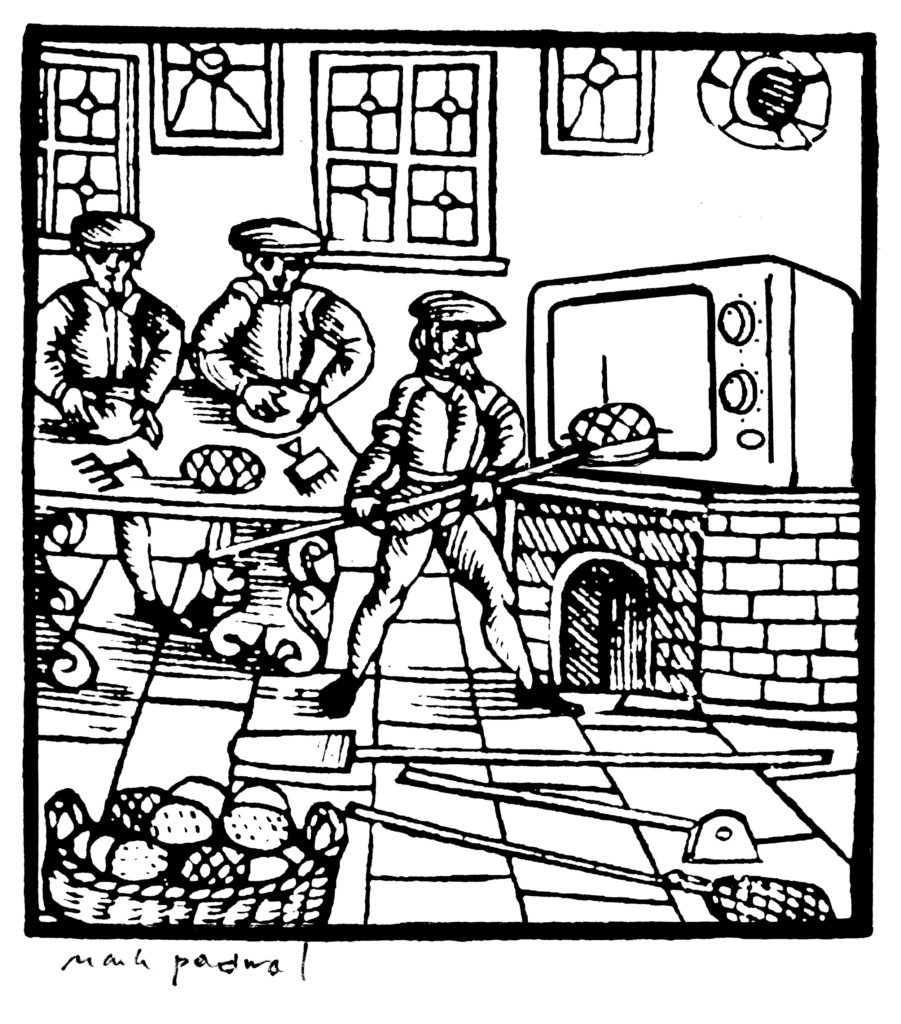Baking Matzah
Mark Podwal (b. 1945)
Digitial archival pigment print on paper
7 7/16 x 7 9/16″
USA, 2020
© Mark Podwal
Matzah at the seder (ritual service and ceremonial dinner) on the first night of Passover represents the unleavened bread that the Children of Israel ate in their haste to leave Egypt. In the Bible and Talmud, matzah is referred to as lechem oni, (poor man’s bread), since it is made from only two ingredients, water and flour. Whereas the Torah prohibits eating chametz (leaven) or having it in one’s possession during all of Passover, the commandment for Jews to eat matzah applies only to the first night of the festival, or first two nights outside the land of Israel. From the time the wheat is harvested until the matzah is removed from the oven, each step in the process must be performed for the purpose of having matzah on Passover. If the matzah was baked for any other purpose and later decided to be used at the seder, it would not have fulfilled the requirement for the holiday. Water used in matzah baking must be left to stand overnight to ensure that it is allowed to cool, since water that is above room temperature can accelerate fermentation. This water is referred to as “mayim shelanu” (“our water”/water that has “slept”). Fermentation can also be delayed by the continual manipulation of the dough. Care is taken that the whole process, from kneading to baking, takes no longer than eighteen minutes.

